
Collecting Birds in the Field
 Back to Organisms Back to Organisms
|
|
- Museum skins (1 sample)
- Photos (multiple)
- Tissues (4 samples)
- Post-cranial skeleton (when possible)
- Anatomical spirit collections (when necessary)
|
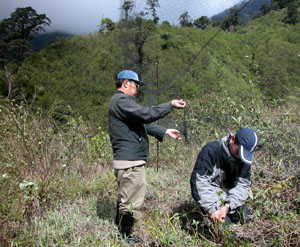
Photo: Jack Dumbacher
Yang Xiaojun from the Kunming Institute of Zoology (KIZ) and student Yang Rong are setting up mist nets to collect birds in the Pianma area in Lusui County.
|
Documentation |
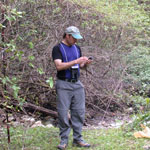
Photo: Diann Prosser
Jack Dumbacher records important data about where collections are made in the field with a GPS device.
|
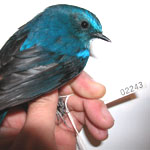 Photo: Jack Dumbacher Photo: Jack Dumbacher
Every specimen is given a field number that connects it to biological and geographic data.
|
Preparation
|
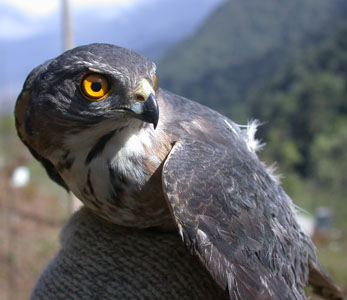
Photo: Diann Prosser
This hawk was captured and released at Pianma Pass in Lushui County. Important observations like this contribute to the record of this species' distribution. Visit our interactive maps to see our bird collections in Lushui County and others!
|
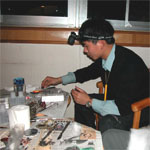
Photo: Jack Dumbacher
|
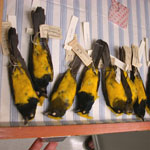
Photo: Dian Prosser
Ornithological museum skins are collected from each specimen.
|

